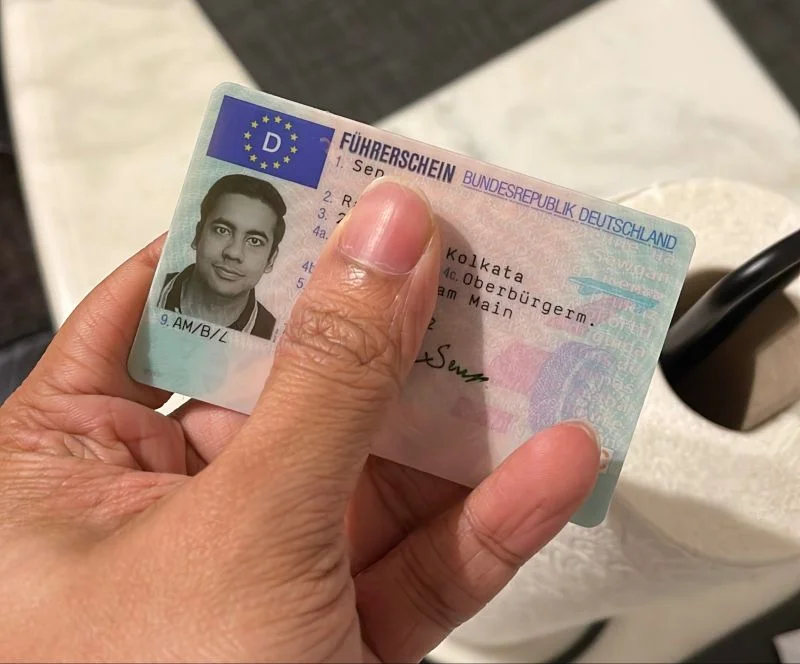10 Websites To Help You Learn To Be An Expert In Buy A Driver's License Legally

How to Legally Buy a Driver's License: A Comprehensive Guide
Acquiring a motorist's license is a substantial turning point for numerous people, representing self-reliance and the ability to take a trip freely. However, the processes and guidelines surrounding getting a chauffeur's license can be complex, leading some individuals to look for faster ways. It is essential to emphasize that buying a motorist's license legally isn't about bypassing guidelines; rather, it's about comprehending the genuine procedures for obtaining a chauffeur's license in your jurisdiction. B197 Führerschein Wie Viele Stunden intends to notify readers about the correct treatments and standards for obtaining a motorist's license legally.
Comprehending the Legal Process of Obtaining a Driver's License
Before delving into the requisite steps for acquiring a chauffeur's license, it's vital to comprehend the legal framework that governs these processes. Each state or nation has its own Department of Motor Vehicles (DMV) or equivalent authority, which manages the issuance of chauffeur's licenses. Here's a breakdown of the typical steps involved in acquiring a motorist's license legally:
| Step | Description |
|---|---|
| 1 | Eligibility Check: Verify age, residency, and other requirements. |
| 2 | Student's Permit (if needed): Some areas require getting a student's permit before applying for a full license. |
| 3 | Chauffeur's Education: Complete any necessary motorist's education courses. |
| 4 | Practice Driving: Accumulate the needed variety of practice hours. |
| 5 | Composed Test: Pass a written exam covering traffic laws and guidelines. |
| 6 | Road Test: Successfully finish a driving test with an examiner. |
| 7 | Application Submission: Submit the application in addition to required files and fees. |
| 8 | Getting the License: After passing all tests and conference requirements, receive the chauffeur's license. |
Step-by-Step Breakdown of Each Phase
1. Eligibility Check
The very first action towards getting a driver's license is to confirm that you fulfill the eligibility requirements. Typically, this consists of being of a specific age (often in between 16 to 18 years), being a citizen of the state in which you are using, and having valid recognition.
2. Student's Permit
In numerous locations, you need to first obtain a student's permit, which enables you to practice driving under specific limitations. This permit often requires passing an initial written test and is normally available to more youthful applicants.
3. Driver's Education
Several states mandate conclusion of a driver's education course that consists of both class instruction and behind-the-wheel training. This education assists new chauffeurs understand safe driving practices and state-specific traffic laws.
4. Practice Driving
Many jurisdictions require a set variety of hours driving under guidance before you can take the road test. Inspect your state's guidelines to find out how many hours are needed and what external conditions are required (e.g., night driving).
5. Composed Test
Before taking the roadway test, candidates should usually complete a composed evaluation. This test normally assesses understanding of roadway indications, traffic laws, and safe driving methods.
6. Road Test
The road test examines your practical driving abilities. An inspector will evaluate your ability to handle a car while following traffic laws throughout a set driving path.
7. Application Submission
After passing the tests, you will require to send a formal application for your chauffeur's license. This can normally be done in person at your regional DMV workplace or sometimes online. Guarantee you have the required files, such as identity verification and proof of residency, and be prepared to pay the license fee.
8. Getting the License
When all requirements are met, you will receive your chauffeur's license. Note that in some jurisdictions, a provisional license may be provided at first, followed by a full license after maintaining a clean driving record for a specific duration.
Frequently Asked Questions (FAQs)
1. Can I use a foreign driver's license in the United States?
Yes, lots of states enable tourists to drive with a valid foreign motorist's license for a set period. Nevertheless, it's necessary to examine particular state policies, as the guidelines differ.
2. What is the minimum age to get a driver's license in the United States?
This differs by state, however the minimum age is generally in between 16 and 18 years. It is a good idea to consult your state's DMV.
3. How long does it require to get a driver's license after passing tests?
Once all requirements are met, lots of states provide the license on the same day, generally in the form of a short-lived license until the main card shows up by mail.
4. What documents do I need to request a chauffeur's license?
Documents typically consist of proof of identity (passport, birth certificate), evidence of residency (utility expense, lease), Social Security number, and sometimes, school presence records for minors.
5. Can I get a driver's license if I have a criminal record?
Having a criminal record may impact your capability to acquire a driver's license, particularly if the offense associates with car operation. Regulations differ by state, so it's crucial to examine particular requirements.
Obtaining a motorist's license legally needs a clear understanding of the specific processes, requirements, and guidelines in your location. While it might appear cumbersome, following the appropriate actions ensures security, compliance with the law, and a valid license that supports the freedom to drive legally. By focusing on education, practice, and adherence to legal guidelines, prospective motorists can confidently browse the journey to becoming certified drivers.

